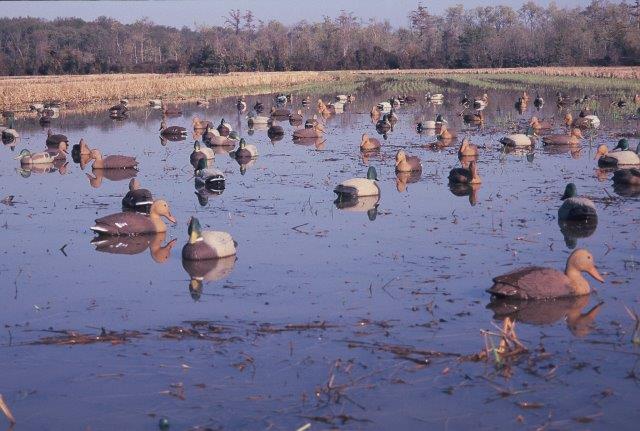Small Water Decoy Tips
Bob McNally 01.12.16

It’s important to spread decoys out in a small slough or pond, and don’t use too many dekes, says duck hunting veteran Chuck Lock of famed Max Sport Shop in Stuttgart, Arkansas. Usually just a couple dozen or so dekes is ideal. More than that and ducks have difficulty landing and won’t pitch in as readily, according to Lock.
For some reason, ducks prefer to settle into a small body of water over decoys before landing, explains Lock. Therefore, set most dekes wide apart on the side of the pond or slough and expect ducks to wing into the set. Leave a large open landing area on the upwind (opposite) side of the spread.
With a north wind, for example, most decoys should be placed on the south side of a pond, with a large open landing site on the north side. Set your blind in the shade, sun to your back and in the eyes of decoying ducks. It’s best to have the blind not facing directly at decoying ducks, so birds aren’t looking right at you as they settle down. Have the blind angled just a bit to the side, so frontal or side shots at ducks are available.
Be certain decoys are clean and not caked with mud. Puddle ducks are smart and dirty decoys aren’t natural. Take a few minutes to wash off mud and weeds caked on dekes during trips to and from the hunting area.
Be certain decoy lines sink and are unseen by approaching ducks. Floating decoy lines are unnatural and are easily seen by sharp-eyed mallards, pintails, gadwalls, and other wary dabblers.